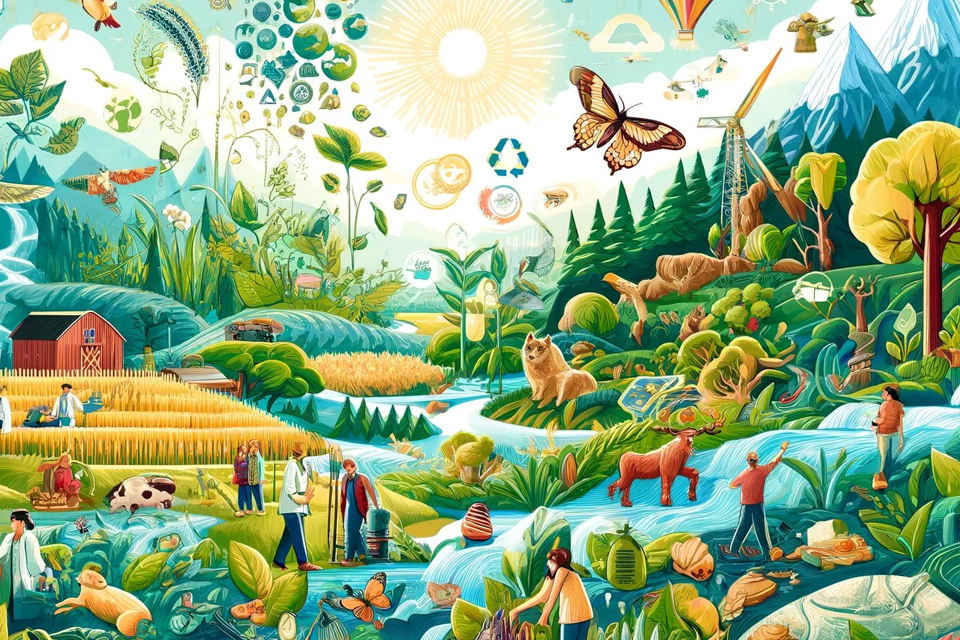Understanding the Value of Biodiversity: Key Facts You Should Know
by Digyfindy

Biodiversity refers to the variety of life on Earth, encompassing different species, ecosystems and genetic diversity. It’s essential because each species plays a specific role that contributes to the health of our environment. For instance, plants produce oxygen and remove carbon dioxide from the atmosphere, while animals like bees and butterflies pollinate crops, ensuring our food supply. However, many species are now at risk of extinction due to habitat loss, pollution, climate change and over-exploitation. When species disappear, it disrupts the balance of ecosystems, affecting food chains and reducing resilience to environmental changes.
Species like elephants, rhinos and coral reefs are examples of biodiversity under threat. Protecting biodiversity means preserving these species and their habitats, which is crucial not just for their survival but also for human well-being. Conservation efforts, sustainable practices and awareness can help protect these endangered species and ensure that biodiversity continues to benefit our planet and future generations.
How Wildlife Helps Shape and Sustain Balanced Ecosystems
Wildlife, from the tiniest insects to large predators, plays an essential role in maintaining balanced ecosystems. Each species, whether plant or animal, everything contributes to ecosystem health by fulfilling specific functions. For example, predators control the population of prey species, preventing overgrazing and helping plants regenerate. Pollinators like bees and butterflies are vital for flowering plants which produce fruits, vegetables and seeds. Other animals help in seed dispersal, ensuring forests and grasslands remain diverse and rich. Even decomposers like fungi and bacteria break down organic material, returning nutrients to the soil and supporting plant growth.
Without wildlife, ecosystems would become imbalanced, leading to the decline of plant and animal populations, soil degradation and other environmental issues. Protecting wildlife means conserving the entire ecosystem, which benefits humans by providing clean water, fertile soil and a stable climate. Recognizing and protecting the roles of different species in nature ensures healthy ecosystems for all life forms.
The Link Between Healthy Ecosystems and Human Well-being
Healthy ecosystems are the foundation of human well-being. They provide the air we breathe, the water we drink and the food we eat. For example, forests act as natural air purifiers, absorbing carbon dioxide and releasing oxygen. Wetlands filter pollutants from water, ensuring clean and safe water sources. Ecosystems also provide essential resources, like wood, fiber and medicinal plants. A balanced ecosystem with diverse plant and animal species can resist environmental changes and recover from natural disasters, creating resilience for human societies.
When ecosystems degrade due to pollution, deforestation, or climate change, it directly impacts human health by reducing access to clean air, water and food security. Healthy ecosystems are also linked to mental well-being, as natural spaces provide recreation and relaxation. Protecting ecosystems is vital for maintaining our quality of life and ensuring that future generations can benefit from nature’s resources.
How Biodiversity Can Help Solve Climate Change Issues
Biodiversity plays a critical role in addressing climate change. Diverse ecosystems like forests, oceans and wetlands act as carbon sinks, absorbing large amounts of carbon dioxide from the atmosphere and reducing greenhouse gases. Forests, for example, store carbon in trees and soil, while mangroves and wetlands protect coastlines from rising sea levels and reduce the impact of extreme weather events. Biodiverse ecosystems are also more resilient, meaning they can recover faster from the effects of climate change. For example, a diverse forest with a variety of plant and animal species can better withstand drought, fire and disease than a monoculture plantation. Additionally, biodiversity provides nature-based solutions, like flood regulation and pollination, which support agriculture and reduce the need for energy-intensive farming practices. Protecting biodiversity is thus an essential part of any strategy to mitigate and adapt to climate change, ensuring that nature continues to support human societies even as climates shift.
The Role of Biological Resources in Supporting Economic Development
Biological resources, such as forests, oceans and fertile land, are invaluable to a country’s economic growth. They provide raw materials for various industries, including agriculture, pharmaceuticals and tourism. For instance, forests supply timber, plants with medicinal properties and habitats for wildlife that attract tourists, while oceans offer fish and other marine resources. These natural resources create jobs, stimulate local economies and contribute to exports. Agriculture depends on biodiversity for healthy soil, pest control and pollination, directly affecting food production and economic stability. However, over-exploiting these resources can lead to long-term damage, reducing their economic value.
Sustainable management of biological resources ensures that they can continue supporting industries while maintaining the health of ecosystems. By investing in conservation and sustainable practices, countries can achieve economic growth while preserving the natural resources that future generations will depend on.






